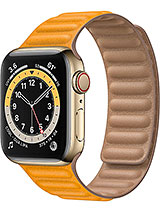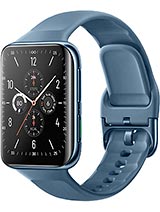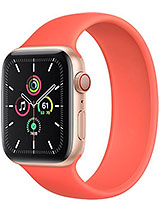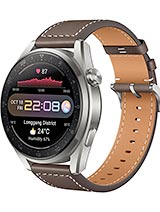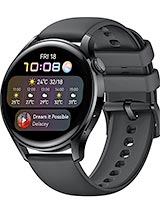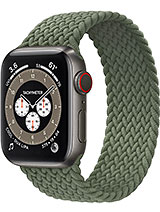Apple Watch Series 6 vs. Fitbit Sense By CNET
The Apple Watch, series, 6 and Fitbit sense are top smartwatches. Both of them can do everything from tracking your steps to your sleep, keeping an eye on your heart rate, your workouts and, of course, your general health and well-being. So, let's work out which one is right for you. The Apple Watch starts at 399 dollars in the US with 100 more. If you want to choose the LTE version, whereas the Fitbit sense is 330 us dollars now straight off the bat. The thing that you probably should know, first up, if you don't know already, is that the Apple Watch Series 6 only works on an iPhone and iOS, whereas the Fitbit sense works on android and iPhone.
So in this comparison, I'm going to break down everything about these watches from battery life, to performance, design and feel, and, of course, health and fitness tracking. So, let's get started both of these smartwatches look fairly similar from the outside. Both of them feature a square always on display, that's color. So that means that you don't necessarily constantly have to keep raising your wrist to see the time or your workout metrics. Although you can turn off the always-on display to preserve battery life now, both of these swatches are fairly easy to see in broad daylight, which is an issue if you want to do a lot of outdoor workouts.
For example, seeing the screen can often be a little tricky, but I found both of these to be pretty good. I would say that the Apple Watch just takes it in terms of overall brightness, especially when you are outdoors doing a workout, and you do have the always on display active. The Apple Watch comes in two different sizes, a 40 or 44 millimeter versions, which is pretty much the same as all the previous apple watches that have come before it. The Fitbit sense comes in just one square watch face size now. Both of these also have interchangeable straps.
So you can completely customize the look to your liking. They have quick release buttons, so it's really simple to swap out the straps to either change the look-up or change it to something like a silicon strap, for example, if you know you're going to be doing an active workout, something that involves some sweat or some water and both of them are water resistant. Navigating these watches is pretty simple, especially if you've never used a smartwatch before they both have touch screens. Obviously- and you can also change settings and interact with the Apple Watch with the digital crown and side button or on the Fitbit sense. There is a side haptic button that vibrates to give you feedback, it's not a physical button, so you might find it takes a little of adjustment to get used to, but it does buzz when you do press it, although I did find occasionally that sometimes it just activated on its own.
So all of a sudden in the middle of a meeting it said I was doing a 30 minute, elliptical workout, I don't know what happened, but it's a little more temperamental than the Apple Watch buttons. The Fitbit sense has a variety of different third-party watch faces to choose from, as well as the first party Fitbit options that you can change in and out in the app the Apple Watch does have a few more default watch faces within watch OS. Seven, however they're not as extensive as the third party options on Fitbit, because there just aren't any third party watch faces on the Apple Watch. At the moment. That said, you can use, what's called complications to add different things onto certain watch faces.
So, for example, you could put in a quick shortcut to start a workout or even check the weather on the side of the watch face now. Let's dive into the health features on both of these watches, because that's probably a big reason why you're looking at buying one of these two so first up a big disclaimer. Please, please be aware that the only medically cleared sensor on both of these watches is the FDA cleared, electrocardiogram or ECG app. Now the other sensors are not medically cleared, and it's very important to tell you that you should not use any of the data from these watches to substitute for proper medical care or medical advice. This is only just a guidance to sort of give you an idea of what might be going on inside your body with that out of the way, let's dive into what these watches can do.
Let's talk blood oxygen, saturation or spo2 levels, because both of these watches do give you an idea of what that might be. So on the Apple Watch. There are a couple of ways the watch gives you a spo2 reading a spot reading on demand background measurements throughout the day, and also, while you sleep now, the Fitbit sense only takes spo2 readings, while you sleep and in the morning about 45 minutes to an hour after you, wake up you'll see a percentage on your screen as well as a range of which the spo2 fell between, as you were sleeping overnight now speaking of sleep. Both of these watches also track your sleep when you wear them to bed. Now this sleep tracking is probably the most substantial difference in the health tracking features that they both share.
The Fitbit sense is incredibly detailed in the information that it gives you. It has data on your breathing heart rate and respiration. Your heart rate variability things like your restlessness, there's so much data in there to dive into and at the end of the night. It also gives you a sleep score, which rates your sleep out of 100 in terms of the quality. Now the Apple Watch Series 6 is not really giving you much information on your sleep at all.
It's mostly concentrating on duration. So when you wake up in the morning, it will kind of show you how much you've slept. You'll also be able to see those sp02 readings as well and your heart rate throughout the night, but you'll need 30 battery life left on the Apple Watch Series 6. In order to track your sleep so for sleep, tracking you'll definitely get the most information out of the Fitbit sense, but it will cost you. So there is something called Fitbit premium, which is Fitbit's subscription service that costs 10 a month, and this is the only way that you're going to get the most metrics in terms of your sleep.
So if you want those really intricate variables, like breathing rate, for example, that's only going to be, if you have a Fitbit premium subscription. Fortunately, you do get six months free when you buy a sense, but it's just something to keep in mind in terms of an ongoing cost. The Apple Watch is the only one that has sound detection, so it monitors the sound around you and lets. You know if the volume is getting a little too loud. That might potentially damage your hearing, and it's also the only one of the two that has fall detection and also the ability to call emergency services if it does detect you taking a tumble and then remain motionless.
The Fitbit, on the other hand, is the only one that has two other sensors that might be valuable to you. The first is a skin temperature sensor. Now this doesn't give you a spot reading, like 98 degrees, Fahrenheit or 36 degrees Celsius. Instead, it gives you an idea if you are above or below your baseline temperature. This might be useful if you're, trying to detect something like potential fevers raises in temperature or even cycle changes for women.
The other sensor, that is the big selling point of the Fitbit sense, is something called an EDA or electron dermal activity sensor now. This is interesting because it's actually detecting my new changes in the sweat. When you put your palm over the watch face to take an EDA or stress reading now the idea is, it will give you a stress management score, similar to the sleep score out of 100 to let you know how your body is responding to stress this score, takes into account things like your activity level and your sleep level as well as heart rate variability and the results from that stress sensing. Now it sounds great on paper, but really this information is kind of confusing, because it doesn't tell you what to do with this information. Some days I got a stress score of like 78, and I was going that's not very good because confusingly, it's not the lower the number, the better the stress score.
It's actually the higher number, the better the stress score or the better you're, supposedly managing your stress. So with a high score. I was like great, but I still feel stressed and with a low score. I was like great I know I'm stressed what do I do with this now? Let's talk fitness heart rate and workout tracking, so both of these smartwatches have the options to track a number of different workouts there's around 40 on the Apple Watch, everything from dancing to yoga, to curling and on the Fitbit sense, there are around 20 different workouts, kickboxing, Pilates running and all the usual ones that you would expect. Both of them also have the option to automatically detect workouts.
So you still get credit for them. Even if you forget to start a workout like an outdoor run, for example, or a nice gentle walk, these watches also have a built-in GPS. So that means you, don't necessarily have to take your phone with you. If you want to track your route, when you do say an outdoor run or a bike ride now I tested both of these watches side by side and the GPS on my outdoor run was fairly accurate. I couldn't see really any huge variances between the two, so that was pretty pleasing.
It takes around 10 seconds or so for the Fitbit sense to lock onto a GPS. As long as you are in an outdoor situation and the Apple Watch was almost instantaneous when you're in the middle of a workout, you can also keep an eye on your heart rate on the Apple Watch. That's just your bpm reading and the Fitbit does the same, although it also gives you a notification when you enter into different heart rate zones now, this could be useful if you're doing something like training for a high intensity workout, and you really want to make sure that your heart rate stays in, say a cardio or a peak for a set amount of time. The Fitbit will notify you accordingly when you enter into different heart rate zones. So let's talk about heart rate data during a workout.
Now both of these watches obviously give you that heart rate information on your screen, but I was noticing, after having done several outdoor workouts on both that the Fitbit sense was definitely lagging behind. What the Apple Watch was giving me for at least the first 10 minutes of my workout. Now I plotted the heart rate data on both of these devices and the heart rate strap on this tool shout out to DC rainmaker, who makes an amazing tool for everyone to use, and lo and behold, it turned out that the Apple Watch was definitely more accurate compared to the heart rate strap than the Fitbit sense. Even though, at the end of the workout about 10 to 20 minutes into my workout, things did start to even up and the Fitbit sense caught up. But that's just something to keep in mind.
If you do a lot of cardio based workouts to see your workout stats at the end of a session, you can look into the apple fitness app, or you can also take a look in the Fitbit app itself. Now. I really prefer the way the Fitbit app breaks down the information. It's super visual really easy to find all the details that you're looking for, such as your slits, if you go on a run, for example, as well as an overlay of your heart rate zone on a map which I really like, and also your heart rate zones in general, which is great, the Apple Watch, does give you all the same data. It's just not presented as well, and I definitely prefer the way that the Fitbit does it moving on to smartwatch features.
Now the biggest thing you'll, probably notice when using the interfaces of both of these watches, is that the Apple Watch Series 6 feels really fast and really responsive, whereas the Fitbit OS on the Fitbit sense is not quite as responsive, there's a little of a lag and especially when it comes to transferring things like new watch faces or even syncing other apps to the watch that can take up to 30 seconds. So the Apple Watch is much faster overall in terms of general performance being smartwatches. Both of them can, of course, receive notifications from your phone, whether you are on android and iOS, on the Fitbit or obviously just on the iPhone on the Apple Watch Series. Six. Now you can respond to notifications on the Apple Watch, using everything from emojis to scribbling, on a keyboard or even dictating with your voice on the Apple Watch.
Now the Fitbit sense only lets you respond to notifications if you've paired it with an android phone, if you're on an iPhone all you'll be able to do is just see, calls and notifications come in. You won't be able to respond to notifications specifically on android, though you'll be able to respond with your voice. Thanks to the built-in speaker and mic on the topic of calls. The Apple Watch is the only one that has a built-in LTE option, although it costs at least 100 more than the base model, starting at 499 us dollars. So this means you'll be able to take calls and say stream, music, for example, when you are out and about without your phone.
The Fitbit sense, if you want to be able to receive calls, you'll definitely need to have your phone with you. You can also talk to a smart assistant on both of these watches Siri on the Apple Watch or Alexei, or the Google Assistant on the Fitbit sense. Now the Google Assistant hasn't rolled out, yet you'll, probably notice, there's a lot of things me saying that hasn't rolled out yet on the Fitbit, since so, hopefully, by the time you watch this video certain things might be active, it's okay, the Alexei application on the Fitbit sense, but it doesn't really do that much, and it's a bit slow Siri is a little better on the Apple Watch. It just lets. You do some more things, and it's faster now.
The ways that both of these watches store music is different. So the big thing you need to know is that you can store your own music on the Apple Watch Series. Six. You cannot on the Fitbit sense, which is a massive downside. I don't know who thought that that was a good idea to remove music storage altogether, but the only way you can listen to music offline or when you don't have a connection on the Fitbit sense is when you have a Deezer or a Pandora premium subscription.
Now there is a Spotify app on the Fitbit sense, but it only acts as a remote control for say your phone or other Spotify connect devices. It does not let you store music offline I'll, give you the bad news. First, if you have the Apple Watch Series 6, and you use the always on display you're going to be pretty much charging it every single day. The Fitbit sense, with the always-on display, will last you at least two days even longer. If you turn off the always on display on both of these smartwatches now the Apple Watch Series 6 will give you around a day and a half of battery life.
If you turn the always on display off and if you are trying to do sleep tracking now, this is pretty much the same, maybe a little better than what the series 5 was giving me, but overall not much of an improvement at all still going to be charging this all the time. The Fitbit sense gave me around four and a half to almost five days of use between charges, including sleep tracking stress, tracking and all the other things on board, so that was pretty good, even though it didn't quite meet the Fitbit claim of five to six days of battery life with the display off now. This is normally the part of the video where I tell you, which one that I would choose. But this time there is no right answer for me because they both serve different needs, and they probably will for you too, if you want a smartwatch with the tightest integration with the iPhone, and you want the ability to do things like have an eye on your health features with an ECG some blood oxygen readings and be able to track your sleep, although in a limited way, get the Apple Watch. But if you want something that is cross-platform, that has really deep sleep insights, as well as the option of having a continuous spo2, tracking or blood oxygen tracking.
While you sleep and stress tracking, although I don't know how useful that really is right, now then get the Fitbit sense, it doesn't offer you the fully fledged smartwatch experience like the Apple Watch, but it does a lot of different things that the Apple Watch doesn't just yet thanks so much for watching. I hope this episode was super helpful for you to break down the differences between the two watches and which one is right for you. As always, let me know which watch wins your vote in the comments below, and I will catch you next time.
Source : CNET

